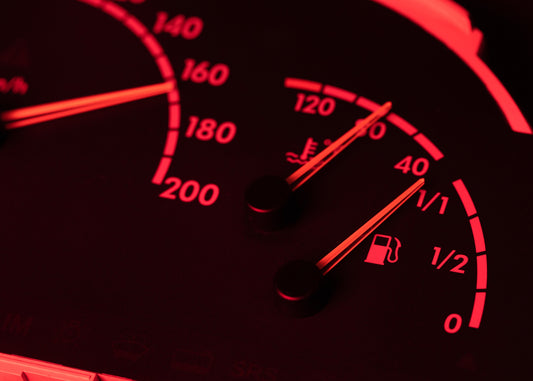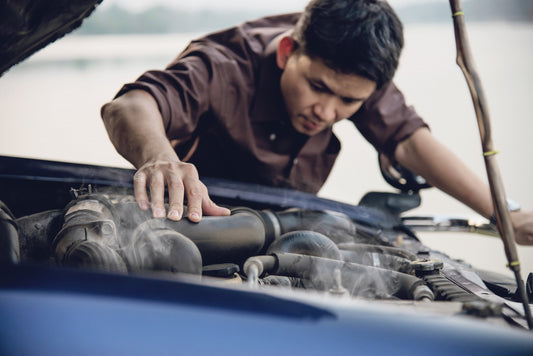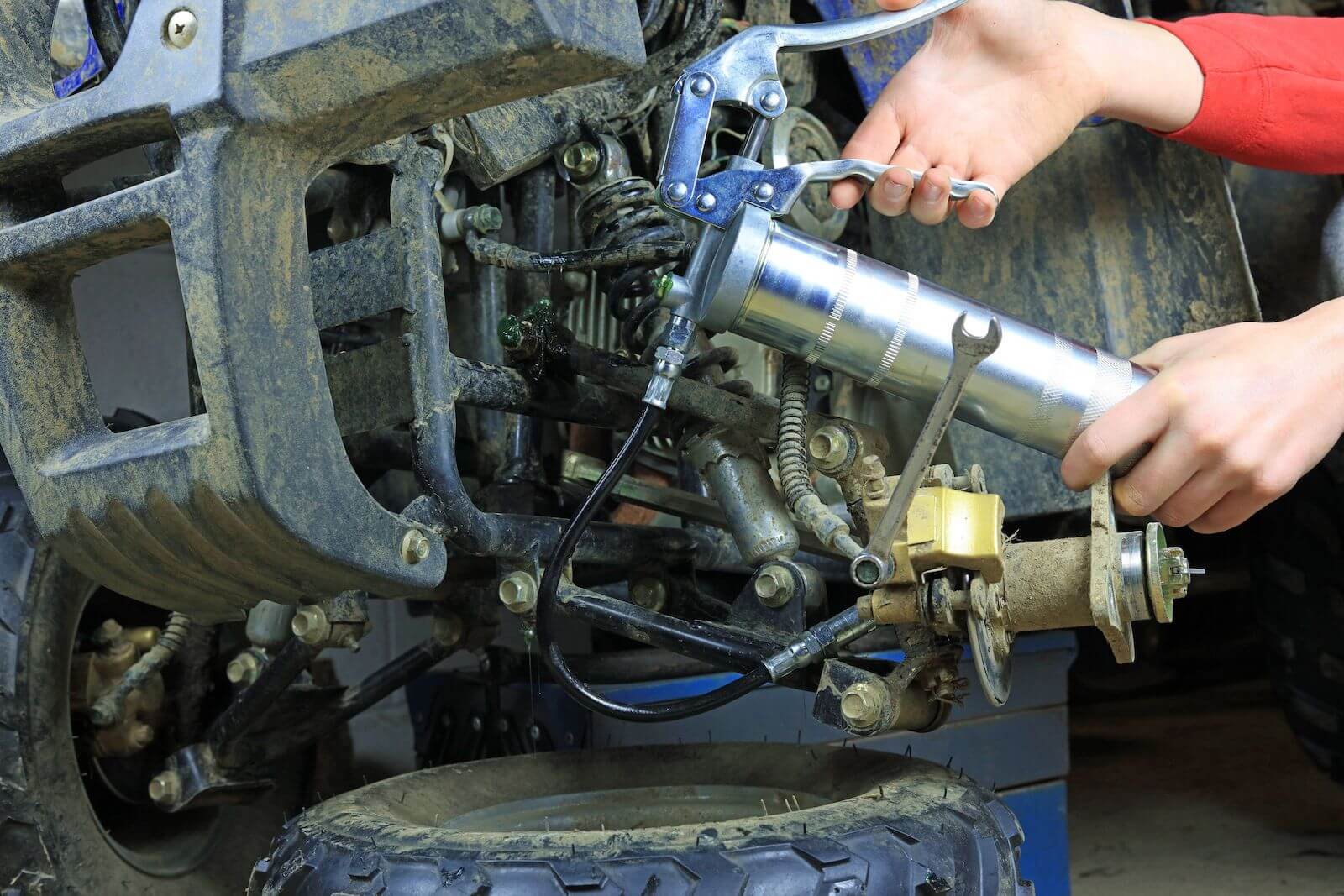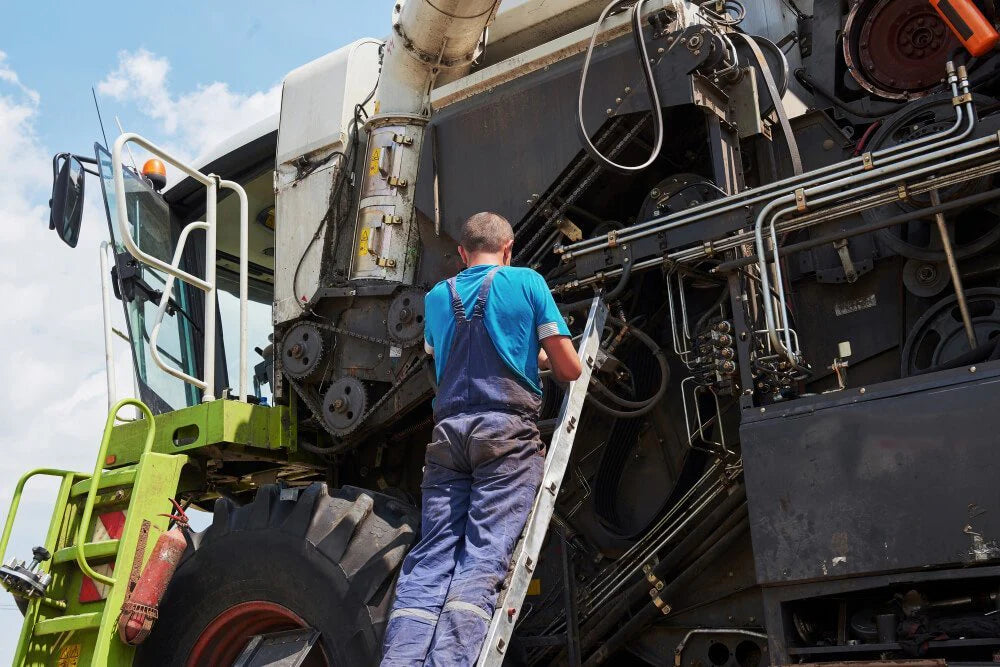A grease gun is an essential tool in both industrial and home-use environments, designed for the primary purpose of lubrication. Facilitating the delivery of grease to various parts of machinery with precision and ease, the grease gun reduces friction, prevents wear and tear, and extends equipment lifespan.
Part of what makes a grease gun genuinely versatile are its fittings – often underestimated, but essential for different lubrication needs. Utilizing the right types of fittings in your grease gun can significantly enhance the efficiency of your lubrication process, ensuring each part receives the correct amount of grease and minimizing waste or leakage.
Characteristics of Grease Gun Fittings
Grease gun fittings, or grease gun couplers as they are also called, are specially designed connectors that attach the end of the grease gun hose or extension to the fittings on machines or equipment that require lubrication.

They are an integral part of the tool, bridging the gap between the pump mechanism and the lubrication spot.
1. Connections and Sizes
Grease gun fittings are varied in terms of connections and are typically available in different thread sizes, depending on the type of grease gun they are used with. The most common threads are 1/8 inch NPT (National Pipe Thread) and M10x1 (Metric), but larger sizes may be used for heavy-duty applications.
2. Material
While the majority of the grease gun fittings are made of plated steel or hardened steel, some heavy-duty fittings are manufactured and made from stainless steel to withstand high pressure. The robust materials of the fittings allow them to endure the high pressure at which grease is being ejected from the gun.
Grease Gun Coupler: Lube Shuttle® safeLOCK L Long Reach Grease Coupler
When it comes to couplers, the best grease gun coupler is going to be long enough for the job and durable. You also need a locking grease coupler that will stay locked while you do a task with your hands-free grease gun! Lube Shuttle® has created the best of both worlds in their new safeLOCK Long Reach locking grease coupler.
shop now3. Designs
The design of grease gun fittings varies based on purpose and application. Some are straight, others are angled (45° or 90°) for hard-to-reach areas. You’ll also find recessed fittings for particular machinery. The designs are devised aptly to accommodate a wide range of lubrication requirements efficiently.
Continuing to understand more specific characteristics, here are the different types of fittings, their uses, and how to choose the right one for your needs.
Grease Gun Fitting Type
When it comes to grease gun fittings, there’s an array of options and brands available, each with its unique characteristics and uses. Understanding these types, their uses, applications, variations, and operating specifications will help you make an informed decision and select the most suitable fitting for your needs.
1. Standard Grease Fittings or Zerk Fittings
Named after its inventor, Oscar Zerk, Zerk fittings, or as they’re commonly known, standard grease fittings, are ubiquitous in machines and vehicles. They are designed for general purpose lubrication and used with most hand-operated grease guns.
Uses and Application — Zerk fittings are primarily used in mechanical systems where specific components need regular lubrication for smooth operation, such as in automobiles, aircraft, and industrial machinery sectors. They are inexpensive, easy to install, and use, making them a go-to choice for many.
Variations — Zerk fittings come in different variations—straight, 45-degree, and 90-degree—catering to lubrication needs of equipment with varied access points. Straight fittings are for easily accessible, straightforward spots while 45° and 90° fittings can be used for harder-to-reach or confined spaces.
Operating Specifications — Standard grease fittings operate in a pressure range of 4,500 to 10,000 psi and are available in sizes ranging from 1/4 inch to 1/8 inch NPT or M10x1 to M12x1.
Long Reach Needle Grease tip
This is preferred for any machines that have grease fittings that are hard to reach. Hard to reach zerk fittings may be inside a joint, behind some hoses or wires, or behind a guard or shield.
shop now2. Button Head Fittings
Button head fittings are designed to handle high volumes of grease, ideal for tasks involving large, heavy machinery or industrial applications.
Uses and Application — Their robust design makes them perfect for lubricating bearings, pins, bushings and other parts in heavy-duty machinery, construction equipment, and trucks that require copious amounts of grease.
Variations — Button head fittings come in two variations: standard button and giant button. The choice between the two depends largely on the volume of grease required for a specific application.
Operating Specifications — Generally, these fittings operate between 6,000 to 10,000 psi pressure range and are available in sizes from 1/4 inch to 1/2 inch NPT.
3. Flush Type Fittings
Flush type fittings sit flush against the surface of the application and are typically used when space restrictions limit the use of other types of fittings.
Uses and Application — Being compact, they’re commonly used for applications where regular grease fittings could interfere with moving parts, such as linkages in industrial machinery, gearboxes, or vehicles.
Variations — Flush fittings come in two main types: threaded and press-fit type. Threaded types are installed using a wrench, while press-fit types are hammered into a hole until they sit flush.
Operating Specifications — Most flush type fittings function in a pressure range between 5,000 to 10,000 psi.
4. Pressure Relief Vent Fittings
Pressure relief vent fittings, as the name suggests, are designed to relieve excess pressure that builds within a system to avoid damage.
Uses and Application — They find their use in applications where over-lubrication could lead to seal damage, such as gearboxes, electric motors, pumps, and other industrial machinery.
Variations — These fittings come in various burst pressure ratings, typically ranging from 5 psi to 25 psi. Each rating is color coded for easy identification of its pressure relief point.
Operating Specifications — Pressure relief vent fittings are available predominantly in a standard 1/8 inch NPT or M10x1size, and are designed to operate at different pressure levels based on their burst pressure rating.
How to Choose the Right Grease Gun Fitting Type
Choosing the right grease gun fitting type is incredibly important when it comes to ensuring the longevity and efficiency of your equipment or vehicle. You’d have to contemplate a few considerations to pick the best fit for your needs.
1. Understand the Specific Needs of Your Equipment
The first step in choosing the right fitting is to understand the peculiar needs of your equipment.

Each piece of machinery, vehicle or equipment has its specific lubrication requirements which are often outlined in their manufacturers’ manual. These guides usually mention the type, size, and sometimes even the angle of the recommended grease fitting.
2. Space Constraints
Consider the amount of space available at the lubrication point. If the area around the fitting is tight or hard-to-reach, angled or flush type fittings may be suitable. Straight fittings are ideal for places with ample space.
3. Amount/Volume of Grease Required
If the machinery or equipment requires high volumes of grease, consider using button head fittings. For systems that require less, standard grease fittings or pressure relief vent fittings may suffice.
4. Pressure Considerations
Generally, standard equipment can handle the pressure ranges that standard grease guns provide. However, if the machinery you are lubricating cannot tolerate high pressure, pressure relief vent fittings can be ideal.
5. Environmental Factors
Consider your working environment. If the fitting will be exposed to harsh conditions or corrosive materials, a stainless-steel fitting may be more beneficial longer term.
Lube-Shuttle®: Rigid Grease Pipe
The 6 inch rigid delivery pipe is ideal for Lever Handle Grease Guns The rigid pipe allows the operator to use both hands to work the grease gun while holding the coupler tightly on the zerk fitting.
shop nowWhat is the most common standard size grease fitting?
The most common standard size for grease fittings is 1/8″ NPT (National Pipe Thread) or M10x1 (Metric). These two sizes are widely used due to their versatility and compatibility with a vast range of different equipment, tools and machinery parts—a characteristic that has earned them the title of ‘standard.’

Their popularity stems from their ability to accommodate most daily lubrication needs, and they are typically the ‘go-to’ size for many mechanics, maintenance professionals, and DIY enthusiasts.
It’s important to remember, though, that while common, they might not be the most appropriate size for every application, and it is always beneficial to refer to the manufacturer’s specifics.
Here’s a quick video to watch on mastering the Lube Shuttle grease guns…
Use a Grease Gun for Precise Application
Using a grease gun for precise application matters when it comes to lubricating grease and to ensuring the smooth operation and maintenance of your machinery or equipment. Proper lubrication minimizes friction, prevents corrosion, reduces component wear, and prolongs the lifespan of your machinery.

Mastery of grease gun usage in applying the exact amount of grease to the correct location is essential for effective results.
Select the Right Grease Gun and Fittings — Choose a suitable grease gun and fitting that meets the demands of your particular equipment or task. There are different types of grease guns with various delivery mechanisms including manual, pneumatic, or electric versions. Also, consider the various fitting types, sizes, and angles to match your requirements.
Familiarize Yourself with Your Equipment’s Grease Points — Understand the specific lubrication points in your machinery or equipment. Most manufacturers have manuals highlighting the locations of these lubrication points, along with the recommended lubricant type, volume, and frequencies of lubrication intervals.
Control the Application Volume of Grease — Different grease guns have different pump ratios and generate varying amounts of grease per pump or trigger squeeze. Familiarize yourself with your grease gun’s output to provide the correct quantity of grease at each lubrication point, thus avoiding over- or under-lubrication of components.
Practice Proper Techniques — To ensure precision, clean the grease fitting prior to applying fresh grease. This prevents contamination and build-up. When applying grease, hold the grease gun’s nozzle securely onto the fitting and make sure that the connection is tight to avoid leakage. Observe the lubrication process and keep track of the pressure at which grease is being administered. Use a steady, controlled motion for consistent delivery.
Lube-Shuttle®: Lever Handle Grease Gun
Lever Handle Air-Tec Lube-Shuttle® Grease Guns are made of the highest quality steel tubes with corrosion-resistant zinc plating.
shop nowHow to Extend Grease Fittings for Hard to Reach Places?
To make your grease fittings more accessible, you can employ extension hoses, couplers, and adapters to reach those difficult areas.

Extension Hoses — Using a grease gun extension hose provides extra reach and flexibility to access those hard-to-reach lubrication points. They are available in various lengths and can be easily attached to your grease gun.
Flexible Couplers — Flexible couplers are available to help navigate obstructions or reach around corners when lubricating in confined spaces. These couplers are designed to attach the grease gun hose to your grease fitting, providing additional flexibility.
Right Angled Adapters — Right angled adapters can be lifesavers when lubricating fittings in tight corners, bends, or around other obstructions. They can simply be attached to your grease gun for enhanced maneuverability, making lubrication in challenging areas more convenient.
Swivel Couplers — Swivel couplers offer a full 360-degree swivel, allowing for easier access to hard-to-reach spots and improved control for precise grease application.
Conclusion
Choosing the right grease gun fitting type is an essential aspect of proper equipment maintenance, as it ensures effective lubrication that caters to your machinery’s specific needs.
By familiarizing yourself with the different types of grease gun fittings, their uses, and applications, you’ll be better equipped to make the right decision when selecting a fitting for your particular requirements.
Furthermore, proper handling of a grease gun for precise application, combined with the use of extension hoses and adapters to deliver grease and reach difficult spots, ultimately leads to smoother operations, increased efficiency, and extended equipment life.
FAQs
Are there different fittings for a grease gun?
Yes, there are different types of fittings for a grease gun. The main types are standard (Zerk) fittings, button head fittings, flush type fittings, and pressure relief vent fittings. Each type has a unique design and is used for specific applications based on the lubrication needs of your equipment or machinery.
Are there different types of grease nipples?
Yes, grease nipples, also known as grease fittings, come in a variety of types. Some of the most common include standard or grease Zerks fittings, button head fittings, and flush type fittings. Each drive type grease fitting is designed for different applications or machinery and can come in different sizes and angles.
What is a Zerk or Alemite fitting?
A Zerk or Alemite fitting is a type of grease fitting commonly used in mechanical systems that require periodic lubrication, such as in automotive and industrial applications. It was invented by Oscar Zerk, and the name ‘Alemite’ often refers to this type of fitting due to the popular brand that manufactures it.
Do grease guns fit all nipples?
Zerk fittings are held to an international standard, which means regardless of the thread size the “bulb” of the zerk fitting (part that connects to the grease gun) is standard and should connect to any grease gun. However, please note that during COVID shortages some non-standard zerk fittings were used by companies, these fittings are a slightly different size and may cause leaking or be difficult to connect to a grease gun.
Our recommendation is to replace any fitting that leaks or causes an issue, whether it is due to improper size or normal wear and tear. Also, any fittings that are not “zerk” fittings will require a different connector on the grease gun, please check the fitting before purchasing your grease gun to know if you will need an additional coupler.
Are there different fittings for grease guns?
Yes, grease guns use different types of fittings or couplers to connect the grease gun coupler itself to the grease fitting or nipple on the equipment being lubricated. The most common types include hydraulic couplers, clip-on couplers, press-on couplers, slide-on couplers, and needle-end couplers.
What is the difference between 1/4 and 1/8 grease fittings?
The numbers 1/4 and 1/8 indicate the nominal width of the grease fitting’s thread diameter. 1/4″ and 1/8″ are common thread sizes for grease fittings, with 1/8″ being the most common. In general, larger equipment or applications may use larger thread sizes like 1/4″.
What is the difference between 3 jaw and 4 jaw grease coupler?
The terms 3 jaw and 4 jaw refer to the number of jaws—or small, claw-like protrusions—inside the coupler that grab onto the grease fitting to create a secure seal. A 3 jaw coupler has three jaws, forming a triangle. A 4 jaw coupler has four jaws, forming a square. A 4 jaw coupler generally provides a stronger grip, which can be especially useful for high-pressure greasing or when working with damaged or worn fittings. However, 3 jaw couplers are still quite common and are suitable for many general-purpose applications.










